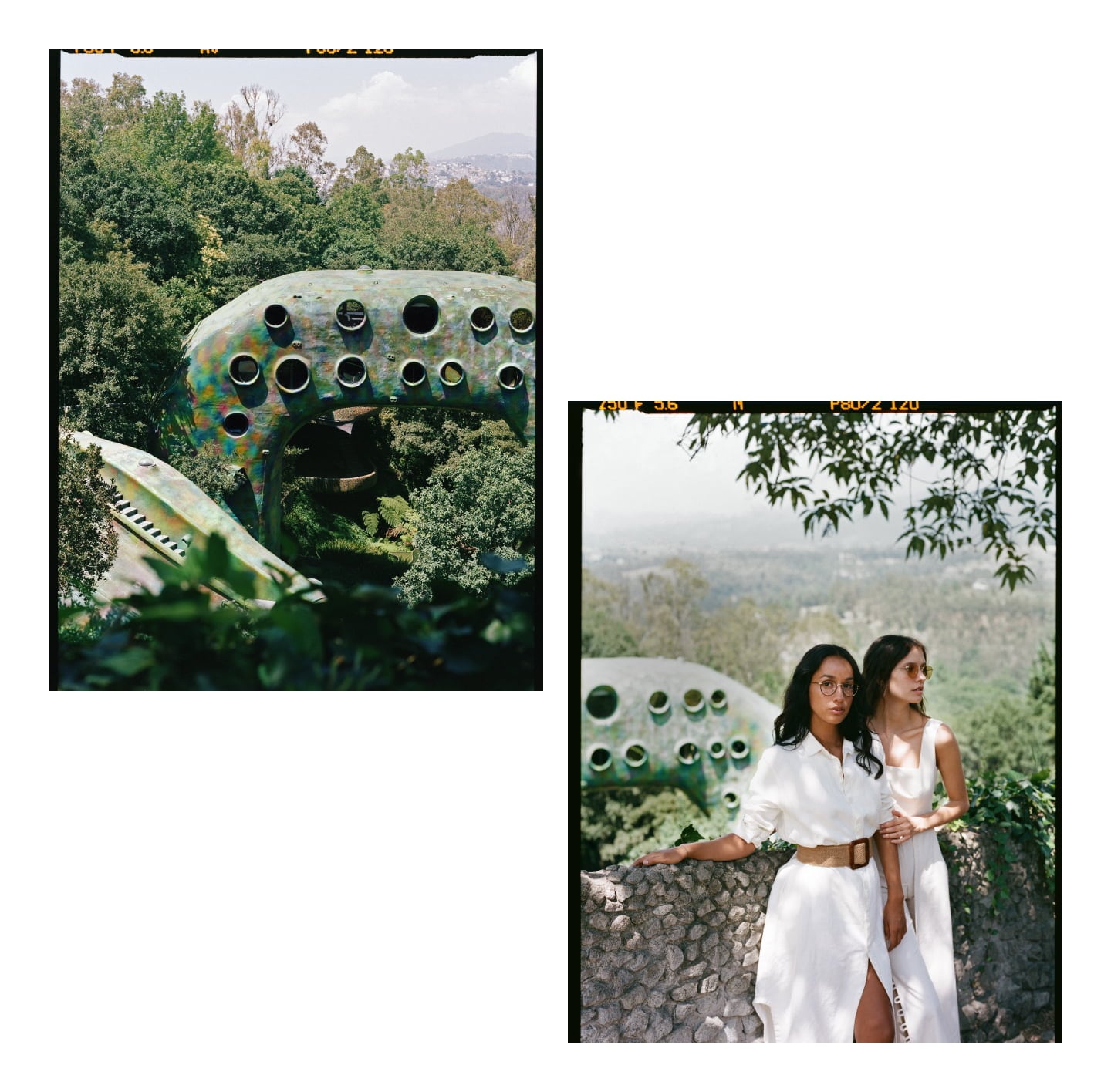Celebrating 90s organic architecture from Mexican architect, Javier Senosiain
In Parque Quetzalcóatl—imaginative Mexican architect Javier Senosiain’s landscape and architecture wonderland northwest of Mexico City—organic swirls flow into whimsical whorls without one simple straight line to be found among the many spectacular structures. Inspired by natural forms but infused with surrealism, Parque Quetzalcóatl ripples with wonder.
It’s through these inspiring environments that Barcelona-born, Mexico City-based film photographer, Pia Riverola, captured the latest Oliver Peoples campaign, shining a light on the luxury eyewear brand’s iconic frames. Developed in partnership with nostalgic Instagram account, @90sanxiety, a destination that acts as a daily reminder of the decade’s milestone moments, the campaign imagery specifically embraces the astonishing locations that Senosiain constructed and expanded upon in the 90s. Altogether, it’s a celebration of the originality of the 90s seen through the lens of Oliver Peoples.

The Green House, Parque Quetzalcóatl
The Cactus Garden, Parque Quetzalcóatl
She wears Rosden in Pale Citrine + Sea Mist
“The objective was to use the space as the backdrop for our project and showcase the significance of
Senosiain’s work from the 1990s into the 2000s. Organic architecture is the way of the future and Javier
Senosiain is a leader in this philosophy.”
- James Abraham, @90sanxiety
Londell, featured in the grass amphitheater
Senosiain has long since earned his spot on the roster of greatest global architects. After years studying bio- architecture, the iconoclast became a supporter of the organic architecture teachings of Frank Lloyd Wright. With this in mind, he sought to use his practice to create architectural structures that harmonize with their habitat rather than disrupt nature. Though his influences are many, it’s evident through the exuberance Senosiain infused into Parque Quetzalcóatl that his vision is an unmistakably unique one.
Watching the sunrise is Weslie Sun.
Senosiain plotted the dreamlike landscape of Parque Quetzalcóatl in a natural valley, in the residential neighborhood of Naucalpan de Juárez, crafting structures from metal skeletons and cement in a style known as ferrocement. He then adorned them in unexpected ways, often with opalescent texture. And yet, as eye- catching as his splendors became, they were always intricately woven into the topography and never superseded their surroundings.



El Nido de Quetzalcóatl (The Nest of the Quetzalcóatl) photographed by Pia Riverola.
This includes the peanut-inspired Casa Organic (Organic Home), one of Senosiain’s masterpieces. which he commenced construction of during the mid-80s but developed into the 90s. as well as the charming mosaic-covered Ballena Mexicana home built in 1992. Inside Senosiain’s Greenhouse and the Satelite Houses, Oliver Peoples became the first to shoot a commercial campaign. The former is a kaleidoscopic; the latter is a subterranean complex of colorful abodes with grass roofs. All embody the architect’s playfulness and demonstrate how the lines of nature—from the shape of a molecule to the reach of a galaxy—fueled Senosiain’s creativity.

Completed in 1995, the Satelite House Complex is located in Ciudad Satélite on the outskirts of Mexico City.

Perhaps the most famous of all Senosiain’s creations, Nido de Quetzalcoatl—or Quetzalcoatl's Nest—was built in 1998 but finished in 2007. Inspired by an Aztec serpent god, Quetzalcoatl, the home slithers across the lush land—and only 5% of it actually makes contact with the ground. Inside, a sprawl of rooms are connected through tunnels. Outside, hand-painted ceramic rings nod to beadwork by the indigenous Huichol people. It’s a sophisticated spectacle of form and function that defines the mission of Senosiain.
As Oliver Peoples is anchored in the ethos of a location, Southern California, the work of Senosiain has come to represent the organic architecture in Mexico. Further, much like Oliver Peoples' frames from the time, Parque Quetzalcóatl represents the elegant originality of the 90s.

El Nido de Quetzalcóatl (The Nest of the Quetzalcóatl) photographed by Pia Riverola.
Words: David Graver
PHOTOS: Pia Riverola







































